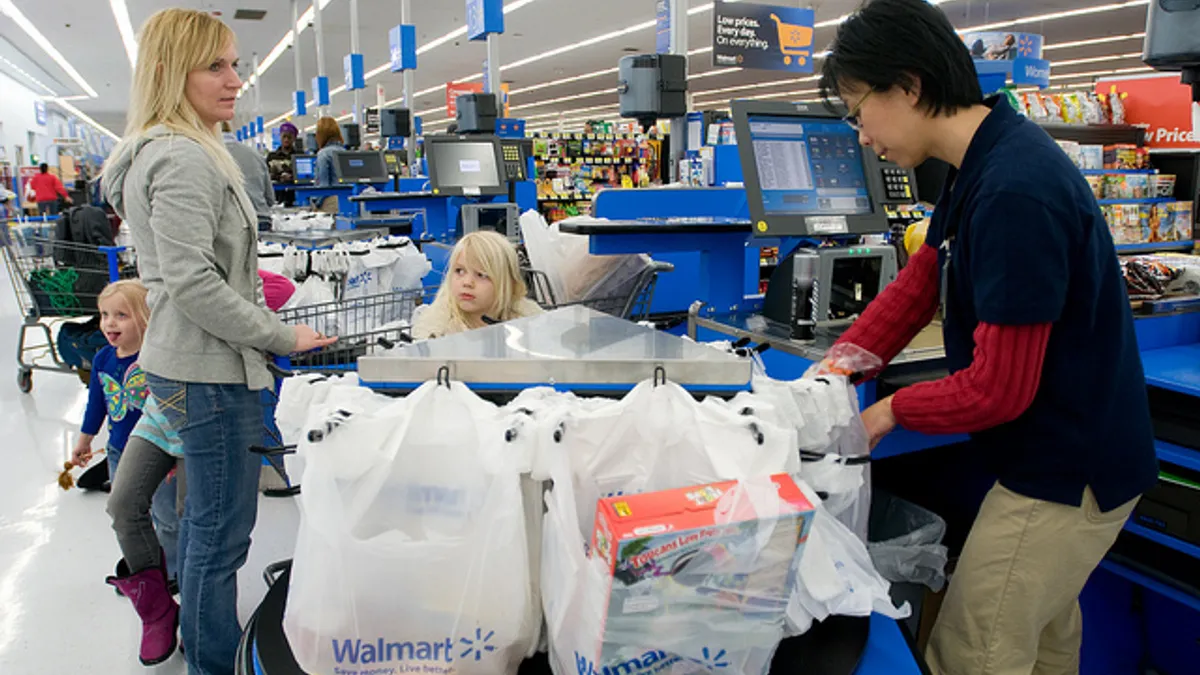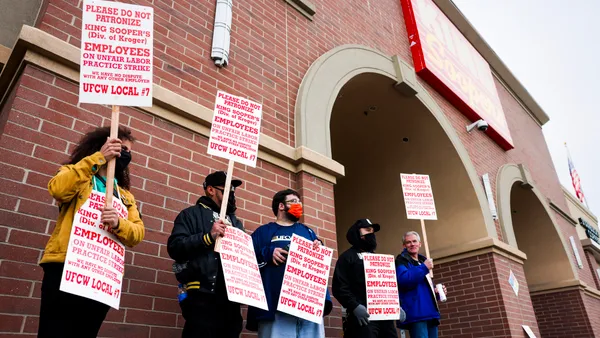Dive Brief:
-
Some big food companies are coming up with new sizes and varieties of old favorites in order to raise prices and cover increasing costs, The Wall Street Journal reported.
-
Mondelez has debuted fudge-coated Oreo Thins Bites prices at 56 cents per ounce, which is 38 cents per ounce more than traditional Oreos, the Journal said. Hershey and Kellogg have also taken creative measures to raise prices, creating new packages and varieties that cost consumers more.
-
"The key on pricing is to make sure you keep it in line with what consumers can afford, and they're feeling pretty good right now," General Mills CEO Jeff Harmening told the newspaper.
Dive Insight:
Several large CPG companies had already signaled they planned to raise some prices in 2019 to cover increasing ingredient and shipping costs, so this news doesn't come as a surprise. The more expensive sizes and flavors of treats and breakfast foods are another method of keeping sales revenues up while competition keeps prices lower in other areas of the supermarket.
Besides Mondelez, Hershey, General Mills and Kellogg, Hostess and Smucker are innovating with new or augmented products to pique consumer interest and get them to pay a bit more at the same time. According to Nielsen figures quoted by the Journal, the strategy seems to be working already. Pricier versions of products helped boost dry grocery prices by 2% in the year ending in November — although by volume, those sales were flat. As a result of this initial success, more food and beverage companies are likely to try this approach.
It's hard to say whether competition and rising costs are the only factors driving this innovation, or if the companies would be launching new premium products anyway. Kellogg is selling Eggo waffles flavored with imported vanilla for 5 cents more per ounce than its standard version, the Journal noted, but devoted fans intrigued by the new style are likely to pay more to give them a try.
Even though most food companies are blaming price increases on higher costs for ingredients, fuel, shipping and the truck driver shortage, the added revenue is also helping boost lagging earnings. Mondelez announced price hikes in its latest earnings report after posting a net revenue drop of 3.7% from slumping North American sales.
Yet there's only so much price-raising companies can get away with before consumers start to rebel. They want to know they're getting something more for the additional money, and they're still watching their pennies. According to a survey from Food Marketing Institute cited by the Journal, 77% of 1,035 consumers said low costs were the top reason for choosing their primary supermarket. Variety and selection of goods were a close second.
There are other risks in this price-raising scenario. Food industry executives know they can't hike prices across the board without hurting their competitive position. And consumers who aren't all that loyal to specific brands can just buy private-label products instead. A recent report found that sales of private-label brands have surpassed those of manufacturers' brands within the past year.
Kroger is a case in point. Executives with the retailer told the Journal they're putting less expensive private-label items next to branded ones on their shelves. And since they know how much products such as pasta sauce and salad dressing cost to make, the retailer can price its offerings at an attractive enough point to control any brand name hikes.













